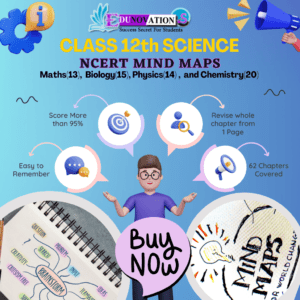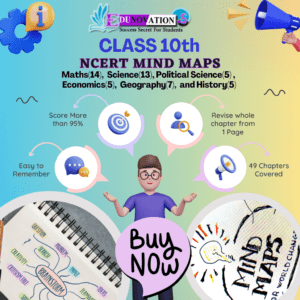Discover how a makerspace lamp workshop empowers students to explore design thinking, DIY wiring, and personal expression through hands-on learning.
The Power of Making: More Than Just Light
While lamp-making might appear simple, this workshop symbolizes something deeper — the spark of self-expression, the elegance of purposeful design, and the empowerment of creation.
In this interactive DIY lamp workshop, participants use basic electrical wiring for lamps to transform simple components into usable objects. From planning and sketching to assembling and lighting up their creations, students explore the product design process in real-time.
Key Highlights of the Workshop
- Student-Centric Design Thinking: Participants brainstorm unique concepts before diving into construction.
- Real-World Technical Skills: Learners handle components, wire connections, and voltage safety with the help of mentors.
- Mentorship & Collaboration: Industry professionals and educators guide students through ideation, prototyping, and debugging.
- Aesthetic & Personal Value: Each lamp tells a story — whether it’s a memory, a cultural motif, or a vision of minimalism.
From Sketch to Switch: The Design Journey
The workshop begins with a simple yet powerful prompt: “Design a lamp that represents you.”
- Students plan and sketch lamp ideas using traditional and digital tools.
- With hands-on guidance, they enter the prototype lighting project phase — cutting, wiring, soldering, and assembling.
- Mentors provide insights into custom dorm room lamp creation — how form meets function in confined spaces.
- Iterative lamp design encourages testing and refining, with the mantra “fail fast, fix faster.”
This full-cycle development builds real-world confidence, helping students see mistakes not as setbacks but as stepping stones.
Why Focus on a Makerspace Lamp Workshop?
Unlike mass-manufactured classroom kits, aesthetic lamp creation in a makerspace encourages deeper understanding. Participants don’t just build lamps; they build mindsets.
Benefits Include:
- Hands-On Engagement: Tactile learning improves retention over passive study.
- Creative Expression: Every lamp is a canvas for personal identity.
- Soft Skill Development: Collaboration, presentation, and feedback are integral parts of the workshop.
- Technical Literacy: Students grasp lamp wiring tutorial for beginners in a safe, supportive setting.
Toppers Use Mind Maps to score more than 95%
-
NCERT Class 11th Commerce Mind Maps
Add to cartOriginal price was: ₹999.00.₹199.00Current price is: ₹199.00. -
NCERT Class 12th Chemistry Mind Maps
Add to cartOriginal price was: ₹199.00.₹75.00Current price is: ₹75.00. -
NCERT Class 12th Commerce Mind Maps
Add to cartOriginal price was: ₹999.00.₹199.00Current price is: ₹199.00. -
NCERT Class 12th Science Mind Maps
Add to cartOriginal price was: ₹999.00.₹199.00Current price is: ₹199.00. -
NCERT Mind Maps For Class 10th
Add to cartOriginal price was: ₹999.00.₹199.00Current price is: ₹199.00.
Purchase Today
Expert Insight: The Rise of Makerspace Learning
According to Dr. Aarti Bhardwaj, an education researcher and curriculum designer,
“When students make something tangible — like a lamp — they don’t just understand circuits or physics better. They feel empowered. They’re not just absorbing; they’re transforming.”
Her words echo the broader movement toward interdisciplinary lamp making as a gateway to more holistic education. When learning becomes creative and constructive, it becomes lasting.
Making and Meaning: Personal Lamps, Powerful Stories
In one workshop, a student designed a lamp shaped like a lotus — representing her cultural roots. Another created a geometric structure inspired by city skylines.
This is where personalized lamp design transcends utility and becomes narrative. It fosters creative expression through lamps, turning the classroom into a storytelling stage.
Makerspace Meets Curriculum: A New Model of Learning
Workshops like these aren’t extracurricular fluff. They can be integrated into:
- STEM and design curriculums
- Project-based learning models
- Skill-based assessments
For institutions looking to implement such programs, platforms like Mart India Infotech offer scalable website solutions tailored for educational innovation.
Resources to Complement the Workshop
To strengthen technical and conceptual learning, here are some resources students and educators can use:
- Free NCERT PDFs: For foundational concepts on electricity and circuits.
- NCERT Mind Maps: Simplify complex concepts in physics and design.
- Notes: Curated content to complement project-based learning.
- MCQs: Test understanding with topic-based questions.
- Syllabus Guide: Align project learning with curriculum goals.
- NCERT Course Videos: Visual aids for concepts covered in design and physics.
- Daily Current Affairs: Link innovation trends with real-world events.
How to Run a Successful Makerspace Lamp Workshop
Launching a makerspace lamp workshop at your institution can spark interdisciplinary learning and creative innovation among students. Here’s a step-by-step breakdown to ensure your workshop is effective, impactful, and safe — while keeping students excited about learning through hands-on design.
👥 Assemble a Diverse Team
Every successful makerspace lamp workshop begins with a dedicated team. Include faculty from science and art departments, professional designers, and experienced electricians. Their combined expertise brings both the technical and creative dimensions together, making the workshop engaging for a wide range of learners.
🔌 Source All Required Materials
Gather essential materials like LED bulbs, sockets, copper wiring, switches, wooden or acrylic lamp bases, and soldering kits. A fully stocked makerspace ensures smooth operations and gives participants the confidence to experiment freely during the makerspace lamp workshop.
📘 Design a Practical Curriculum
A strong curriculum tailored to a makerspace lamp workshop should blend theory with action. Start with basic circuit theory, introduce the lamp product design process, and integrate design thinking exercises. Let students ideate, sketch, and prototype before assembly. This structured creativity is the soul of any productive workshop.
⚠️ Set Safety Protocols and Training
Ensure all participants undergo safety orientation. Use protective gloves, voltage testers, and heat-safe tools. Mentors in your makerspace lamp workshop must monitor each station to ensure electrical safety and proper tool usage. Safety not only builds trust but also promotes independent exploration.
🎉 Celebrate and Showcase Outcomes
Conclude your makerspace lamp workshop with a student showcase or exhibition. Invite parents, faculty, and even external visitors. Let students explain the inspiration behind their lamp designs — this not only boosts presentation skills but reinforces their sense of ownership and achievement.
💡 Closing Thoughts: Lighting Minds, Not Just Rooms
A well-executed makerspace lamp workshop goes far beyond crafting a lighting object. It becomes a platform where students merge creativity with functionality, building not just a lamp but also critical thinking skills, design fluency, and self-confidence. By encouraging students to manipulate materials and work through real-world problems, the makerspace lamp workshop fosters a mindset of innovation and ownership.
When we enable learners to physically shape their ideas, we illuminate more than just rooms — we illuminate possibilities for their future careers in design, engineering, education, and entrepreneurship.shape the objects around them, we also shape their understanding of who they are and what they can become.
🔍 FAQs on Makerspace Lamp Workshop
Q1. What is a makerspace lamp workshop?
A hands-on session where students design and build functional lamps using creative and technical skills.
Q2. How is DIY lamp workshop useful for students?
It builds confidence, teaches wiring skills, and fosters self-expression through design.
Q3. Do you need prior knowledge for basic electrical wiring for lamps?
No. These workshops include beginner-friendly wiring tutorials.
Q4. What materials are used in lamp wiring tutorial beginners sessions?
LEDs, wires, switches, wood bases, and soldering tools are common.
Q5. How can personalized lamp design help in learning?
It connects personal storytelling with technical application, improving engagement.
Q6. What is the benefit of a custom dorm room lamp?
It brings aesthetic and emotional value to living spaces.
Q7. Is aesthetic lamp creation part of the school curriculum?
It can be incorporated under STEM, design, or creative tech programs.
Q8. What is an iterative lamp design process?
A cycle of planning, building, testing, and improving the lamp design.
Q9. How do mentors support in student makerspace workshop?
They provide safety guidance, technical advice, and design feedback.
Q10. Can interdisciplinary lamp making be scaled for large groups?
Yes. With planning, it’s adaptable for classrooms, camps, or even festivals.





